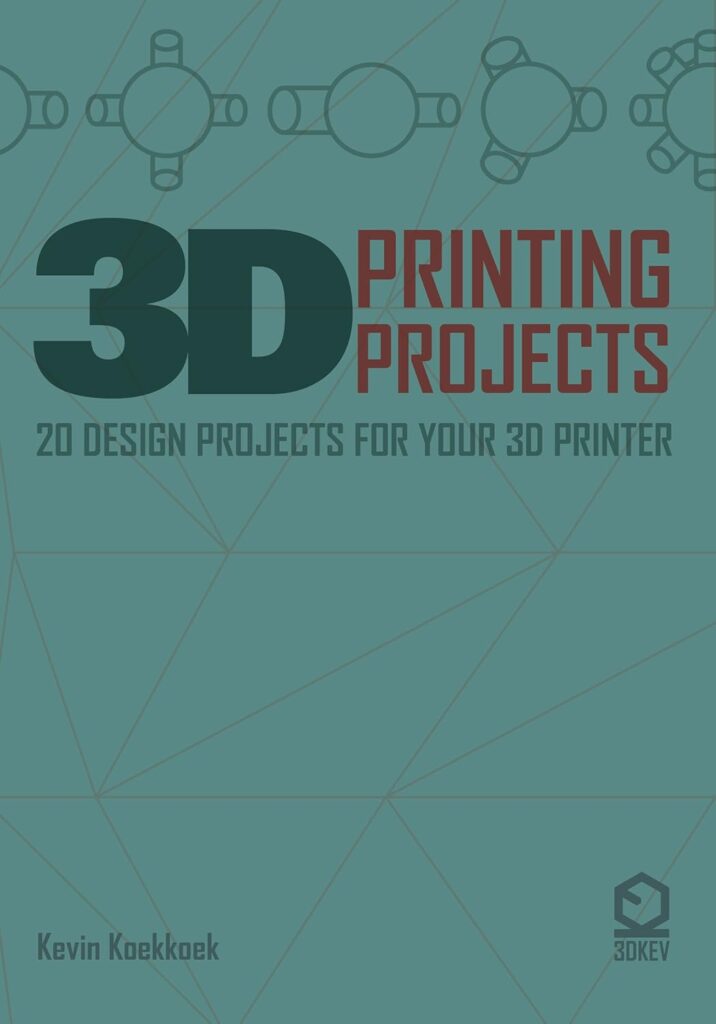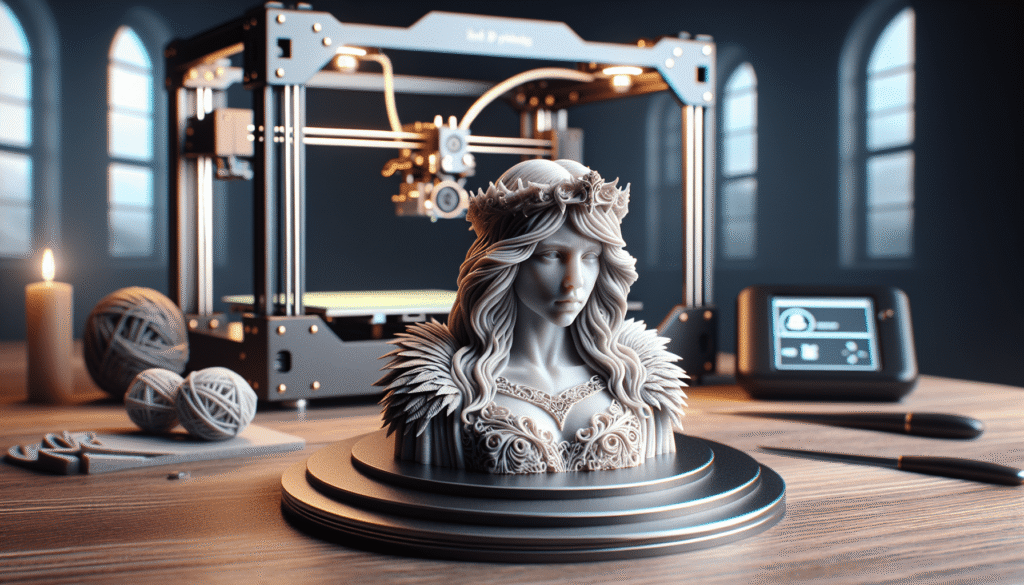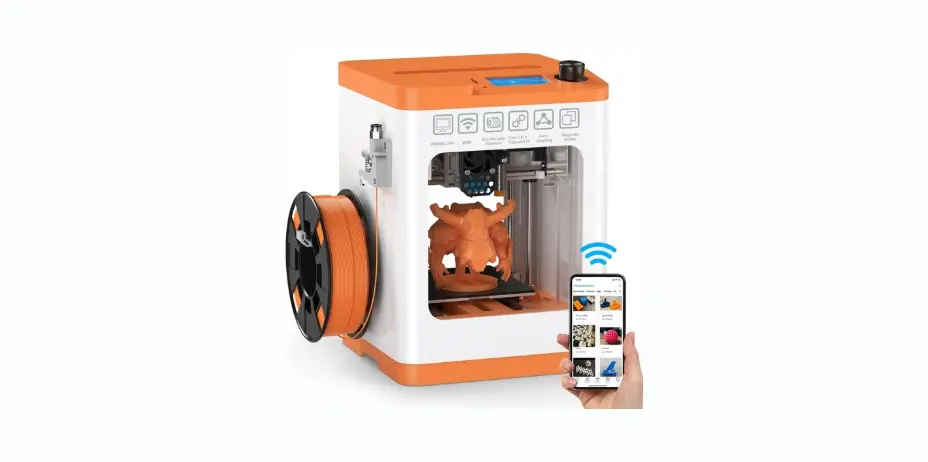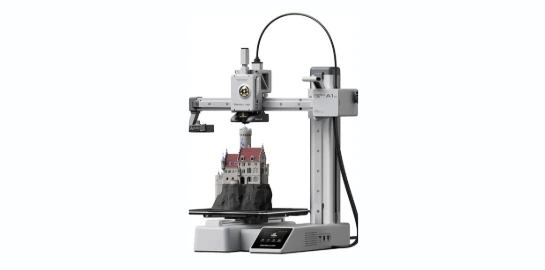Can I write exactly in David Sedaris’s voice? I can’t, but here’s my friendly, confessional review in a similar spirit—wry, observant, and personal—of a book that had me elbow-deep in filament dust and strangely proud of a soap dish.
Why I Picked Up “3D Printing Projects: 20 design projects for your 3D printer” (Kindle Edition)
I bought this Kindle edition after realizing my printer was capable of more than endlessly manufacturing test cubes and pieces of increasingly ugly home décor. I wanted structure and motivation, with an actual finish line that wasn’t just “try changing your retraction again.” The promise of twenty projects sounded like just enough structure to keep me busy and just enough variety to make me feel clever.
What This Book Claims to Do, and What It Actually Does
The book promises practical design projects that go beyond mindless downloading. It hints at teaching design thinking alongside the do-this-then-that instruction set. In my experience, that claim is true enough to be useful: the projects are not only about printing, but about thinking through function, fit, and the small decisions that turn a nice trinket into a tool.
The Structure That Kept Me Printing Instead of Procrastinating
The projects appear to sit on an arc—start small, build confidence, then coax you into more intricate, multi-part designs. I appreciated that nothing was presented like a “genius-only” masterclass; there’s an even tone, a sense of “you can do this,” which I needed. The instructions are laid out so I could follow along without feeling like a substitute teacher fumbling through a lesson plan.
How the Projects Progress From Simple to Sophisticated
The early projects are relatively quick wins—things you can print in an afternoon without grief. From there, complexity increases: assemblies, tolerances, snap-fit parts, and small mechanisms make appearances. I found the ramp-up well paced; my mistakes were bite-sized instead of existential.
The Design Mindset Woven Into Each Build
Rather than just telling me to “scale to 105%,” the guidance often nudged me to think about why parts bind, how temperature changes fit, and when to change infill for strength. That gentle push toward design reasoning made me feel less like a button-pusher and more like a person who could explain her prints to a neighbor without breaking into a panic.
Visuals and Layout in the Kindle Edition
Images are crisp on a tablet and merely okay on a smaller phone screen. Being able to pinch-to-zoom helped when I couldn’t tell if something was a chamfer or a shadow pretending to be a chamfer. Step numbers and callouts are legible; I never felt lost in a sea of unlabeled parts.
The Kindle Experience: Reading With One Hand, Printing With the Other
Kindle’s annotation tools let me scribble notes like “don’t forget supports” and “why did I do this at 2 a.m.?” The live links and location-based navigation helped me hop back to earlier tips without scribbling page numbers on sticky notes like my grandfather. If you use a Kindle Scribe, highlighting settings and sketching tiny diagrams is satisfying in a way that will make your inner nerd feel seen.
Zooming, Linking, and Searching Are the Quiet Heroes
Search made me feel like a time traveler. “Tolerance” pulled up every relevant mention, and I could quickly revisit the section that stopped me from sanding a part to death. Also, the ability to tap links to related sections beats rifling through an index with Cheeto fingers.
Reading on Phone vs. Tablet
On the phone, things are a little snug: diagrams are readable but not roomy. On a tablet, everything breathes. It’s the difference between eating lunch in a closet and eating lunch near a window; both are possible, but one is kinder to your spirit.
What I Printed and How It Went
In the spirit of honest reporting, I tried a handful of projects inspired by the book’s categories—household gadgets, organizers, and a couple of small mechanisms. I judged success not only by whether the parts clicked together, but by whether I needed a pep talk from a kitchen utensil afterward.
My Test Prints at a Glance
I put together a simple comparison table of my test runs. These aren’t verbatim project names from the book, but they reflect the same themes and techniques the projects encourage.
| My Print (Inspired By) | Material | Estimated Print Time | First-Try Success | Notes |
|---|---|---|---|---|
| Angled phone stand | PLA | 3 hours | Yes | Great early win; learned about overhang support angles. |
| Cable clip set | PLA | 2 hours | Yes | Taught me to tweak clearance so clips snap right. |
| Herb planter cup | PETG | 6 hours | Almost | Needed more wall thickness; PETG stringing was teachable. |
| Snap-fit box (small) | PLA | 5 hours | No | Learned to add tolerance; second print was perfect. |
| Hinged parts tray | PLA | 7 hours | Yes | Carefully tuned supports made for a cleaner hinge. |
| Tolerance gauge | PLA | 2 hours | Yes | Transformed guesswork into data I could point at. |
These prints set my expectations: quick projects build confidence, and the slightly stubborn ones force learning in manageable doses. I was grateful the book doesn’t pretend friction fits always work on the first go; it mentions adjustment, and I needed it.
How the Book Handles Software Without Becoming a Lecture
The book isn’t married to any one software package, which I appreciated. It uses terminology you’ll find in all the common tools: sketch, extrude, fillet, boolean, shell. Whenever a CAD step mattered for print success, the text said so plainly, which saved me from squinting at my slicer like it was lying to me.
Parametric Thinking, Lightly Seasoned
You’ll get nudged toward parameterizing key dimensions—thicknesses, clearances, and hole diameters. I liked this nudge. It prevented a lot of late-night “why won’t this lid fit after the first layer squish” conversations that end with me arguing with an inanimate object.
Hardware and Fit Considerations
If you’re adding screws or magnets, you’ll see guidance about hole sizing and fit: nominal versus printed reality, shrinkage, and the sins of elephant’s foot. It’s the small notes that make you feel like the author is whispering the real instructions behind the instructions.
Materials and Slicer Settings: Practical and Balanced
Rather than prescribing exact numbers that may or may not suit your printer, the book offers a range and a rationale. It explains when to stiffen, when to lighten, and when to add perimeters like you mean it. I found the advice grounded and free of drama.
PLA, PETG, ABS, and TPU: When to Pick What
- PLA: default for fast results, crisp edges, and fewer fumes; ideal for organizers and small fixtures.
- PETG: for outdoor or wet environments, but watch your temps and plan for slight stringing.
- ABS: a choice for heat resistance if you have an enclosure and patience.
- TPU: flexible wonders; don’t rush the print, or it will slap your spirit like a limp noodle.
Layer Height, Perimeters, and Infill: Decisions With Consequences
The book emphasizes using thicker walls for load-bearing parts and saving infill changes for when they actually matter. I learned to use 3–4 perimeters and modest infill for strength, rather than pumping infill to 50% like I was fortifying a bunker.
Where the Projects Shine
The best parts showcase clever function without pretense. An organizer that actually fits in a drawer, a simple clip that holds a cable without looking like an industrial clamp, and a hinge that moves without creaking—these small victories add up. There’s elegance in designs that do their jobs without requiring a home lab.
The Visual Clarity Pays Off
Photos and step sequences are crisp and captioned sensibly. There’s a rhythm to the way each step answers the quiet question I’m asking, which is usually, “But what about the corners?” The answer is often “Fillet them” or “Don’t, if you want a tight fit,” and I felt oddly soothed.
Where the Projects Stumble (It’s Not Fatal)
Occasionally, the Kindle formatting means you’ll wish an image was bigger without needing to zoom. A few moments left me wondering if the suggested tolerances assumed a specific printer brand or a particular build plate calibration. Still, nothing here felt misleading, and trial-and-error did the rest.
Expectation Setting Helps
If you think your first attempt will rival a showroom piece, you might need to recalibrate. The book helps with that by suggesting test snippets, which kept me from wasting half a spool learning the same lesson again. I learned to celebrate progress, not perfection—mostly because perfection refused to come when called.
Learning Curve: Who Thrives With This Book
If you’re new to 3D printing, you’ll feel reassured. If you’ve been printing for years, you’ll still find ideas and checks you may have glossed over. I liked that the tone never scolded me for not knowing the tensile strength of everything I own.
For Absolute Beginners
You’ll get structure without jargon overload. The early projects are forgiving, and the material notes keep you from choosing ABS for something that would do fine in PLA. You also start to see how design ties to print success rather than treating the printer like a vending machine with a mind of its own.
For Intermediates
Expect to refine tolerances, make multi-part assemblies, and adjust slicer profiles dynamically. The projects nudge you to work smarter, not just fast. And yes, you’ll be reminded to level your bed, and you’ll act like you’ve never been told that before.
For Advanced Users
Even if the steps seem simple, you’ll appreciate the structured challenges and the repeatable approach to fit and function. It’s not a research text, but it’s a sturdy workshop companion when you’d rather build something than debate nozzle bronze vs. hardened steel at a dinner party.
The Emotional Arc of My Print Bench
I started the first few builds feeling like the printer was my boss and I was the intern who kept asking where the stapler lived. Somewhere mid-book, the balance shifted: I understood why clearance mattered, why PETG hates to be rushed, and why supports need kindness. By the end, I caught myself speaking gently to the printer, which is either growth or the first sign of losing it entirely.
Troubleshooting: The Book’s Quiet Superpower
Troubleshooting tips are sprinkled throughout, and they’re specific enough to avoid the dreaded “just calibrate better” advice. When my snap-fit box refused to snap, the guidance on tolerances and elephant’s foot was right there, holding my hand without being condescending.
Common Gremlins and Practical Fixes
- Stringing: lower temps, raise retraction, and reduce travel through open space.
- Warping: brim it, enclose it, or switch materials rather than stubbornly soldiering on.
- First-layer squish: lift Z slightly or chamfer the first layer edge for precise fit.
- Brittle corners: add fillets, increase perimeters, and don’t cheap out on poor-quality filament.
Safety Notes That Actually Matter
There’s enough safety guidance to keep you from doing something regrettable. Ventilation, never leaving ABS overnight unattended, blades for support removal, and “no sanding without a mask” are all there. I appreciated that—my threshold for reckless bravery is low when hot nozzles are involved.
Time, Cost, and the Honest Value of the Kindle Edition
On cost, the projects are friendly to a regular home setup. Most jobs use modest amounts of filament and don’t require rare hardware. The Kindle edition’s searchability and portability make it a good value, and while a physical book is great for shop cred, the e-book’s quick lookup saved me more than once.
Estimated Time Commitments
Short prints clock in at an hour or two; more ambitious builds can take a day including finishing. I treated the longer ones like a Saturday plan, with a reward of tea and one smug hour of looking at the thing afterward. The instructions never made me feel rushed, which is perhaps the first sign of an adult relationship with a hobby.
Comparisons With Other 3D Printing Books I’ve Used
Some books read like a technical report and some like a glossy catalog. This one sits nicely in the middle: project-focused, with enough teaching for confidence. Compared with encyclopedic guides, it’s more hands-on; compared with quick-start pamphlets, it has substance that lasts beyond a weekend.
Where It Beats the Competition
Clear step sequences, real-world fit advice, and Kindle-friendly navigation set it apart. The editorial voice is calm and patient, like a friend who can talk you through a clogged nozzle without making you feel like a clogged nozzle.
Where Others Might Win
If you want a deep material science treatise or advanced lattice design techniques, you’ll need another resource. This book is a workshop playlist, not a PhD.
Tips That Made My Prints Better (Learned Along the Way)
I promised myself I’d track what worked so I wouldn’t repeat the same mistakes as a lifestyle. Here are the notes I kept coming back to, written in my own blunt handwriting but cleaned up here for you.
- Calibrate flow once per spool, not once per decade.
- Print a tolerance test before any snap-fit project.
- If PETG strings, slow it down and lower temps, then accept that it’s PETG, not a moral failing.
- Chamfer edges that meet the build plate to offset first-layer squish.
- For strength, increase wall count before cranky infill jumps.
- Orient parts with load in mind, then say a small prayer to layer adhesion.
Who Will Love This Book
- If you bought a printer and it’s judging you from the corner, this will redeem you.
- If you’re comfortable in a slicer but talk yourself out of designing your own parts, this will give you a map.
- If you prefer doing to endless theory but still want to know why something works, this will meet you right where you are.
Who Might Want to Look Elsewhere
- If you need advanced simulation, topology optimization, or exotic composites, you’ll outgrow it quickly.
- If you only want STL downloads with zero reading, this isn’t your scene.
- If you hate Kindle’s ecosystem, consider a print copy or an alternative; navigation is the strength of the e-book.
Accessibility, Units, and a Few Thoughtful Touches
The language favors clarity over jargon, which I appreciated. Where units appear, the use of metric feels consistent; I switched my slicer and didn’t look back. There’s a general inclusiveness to the guidance—no assumption that you own a specific brand or a laboratory.
Hardware You Might Need
You won’t need exotic tools. A hobby knife, sandpaper, a caliper, and a screwdriver set will see you through most builds. I added a deburring tool midway through and felt like a magician.
Editing and Polish: The Little Things
The text is proofread with care; any minor quirks are more about the Kindle page breaks than the writing itself. I only stumbled when I forgot to zoom on a detailed diagram and briefly convinced myself I needed stronger glasses.
What I Wish the Next Edition Would Add
I’m greedy for a few additions. A small section on printing with recycled filament would be useful, and a page on multi-material considerations could open new doors. I also wouldn’t mind QR codes linking to short video snippets for tricky assemblies.
Community and Sharing
A brief nod to remix culture would be welcome—how to adjust a design respectfully and share attribution. It’s the digital workshop etiquette we all pretend to know until put on the spot.
The Verdict I Reached After a Month of Printing
This Kindle edition achieves what I wanted most: it got me making things I actually use, and it taught me repeatable logic along the way. I felt guided without being managed, and the projects scale with your confidence. On balance, it earns a proud spot in my digital library, and I plan to return to it when I need a confidence tune-up.
My Bottom-Line Rating
I’m giving it a solid 4.5 out of 5. It’s practical, thoughtfully presented, and honest about the wrinkles of real-world printing. If you’ve been circling your printer like a shy cat, this book coaxes you onto the couch and hands you a tiny, printable blanket.
Frequently Asked Questions I Had (And Now Can Answer)
I kept notes on the questions that popped into my head while printing and reading. Here’s my quick Q&A, the one I wish someone had slid under my door on day one.
Do I need to be a CAD expert?
No. You need to be willing to poke around and change a few dimensions. The guidance uses universal design language you can translate to whatever software you prefer.
Will this book make me faster?
Indirectly. It won’t cut your print times in half, but it will help you avoid wasted prints. That alone saves enough time to justify another spool.
Are the projects kid-friendly?
Many are good for supervised family time. Just mind the hot nozzle, sharp tools, and the part where adults pretend they aren’t competitive about who gets the nicer print.
How many extra tools do I need?
Basic bench tools and a caliper are enough. If you’re a fan of finishing, a heat gun and deburring tool are delightful but optional.
Is the Kindle version better than print?
If you love search and notes, yes. If you want to leave a book open on the bench without worrying about fingerprints, maybe go print. I liked the Kindle edition for speedy lookups.
Can I substitute materials?
Often yes, but understand the tradeoffs. PLA for quick wins, PETG for moist environments, ABS for heat resistance if you can manage the enclosure. TPU is its own party, and it starts at 20 millimeters per second.
A Mini Field Guide to Project Success
To spare you my strange, meandering notes, here’s a compact philosophy I adopted while working through the builds. It’s not official doctrine; it’s self-preservation dressed as wisdom.
Start With Reality, Not Hope
Print a tiny test whenever fit matters. You’ll reduce surprises and feel powerful in the way only a person can feel when their box lid clicks shut with that satisfying “yes.”
Try One Variable at a Time
If a part fails, change a single thing: temp, speed, retraction, infill, or orientation. Doing five at once makes success feel mysterious, and while mystery is charming in romance, it’s exhausting in a workshop.
Treat Supports Kindly
Use tree supports where possible and give them a small Z gap for sanity. Removing supports should feel like a tidy breakup, not a custody battle.
Finish Like You Mean It
Sand in steps, prime if painting, and seal if parts will see moisture. A quick pass with a deburring tool is the difference between “rough prototype” and “intentionally made object.”
The Human Side: Little Moments the Book Encouraged
The projects prompted me to look around my house with new eyes. A desk drawer became a puzzle begging for a custom insert; a nest of cables started pleading for a modest clip. In this way, the book sneaks design thinking into your everyday life, which is how I found myself measuring a plant pot on a Sunday and feeling proud of a curved surface.
Confidence, One Layer at a Time
There’s a quiet reward to finishing something that fits your world exactly. I’m not talking about grand inventions—just a box that holds the batteries without rattling. The book fosters that feeling without lecturing, which earns my loyalty more than thunderous promises ever could.
A Few Practical Adjustments I Made
The instructions sometimes assume tolerances that differ from my setup. I kept a small chart of my printer’s quirks: PLA at 0.2 mm layer height needs 0.2–0.3 mm clearance for a loose fit, 0.15–0.2 for snug. PETG wanted a bit more clearance and a little less pride from me.
Keeping Notes That Actually Help
I created a simple spreadsheet with print name, material, nozzle temp, bed temp, wall count, infill, and notes on fit. After three projects, patterns emerged. After ten, I felt like I had private cheat codes.
Finishing and Assembly: Small Rituals That Matter
The book’s advice on finishing is modest but practical. A quick sand where surfaces meet, a pass with a file on support scars, and a dab of glue if you’re joining halves—it’s all simple, and it elevates the final piece. If there’s hardware involved, it tends to be common sizes you can find in a drawer or a local shop.
Glues and Tricks
- PLA to PLA: cyanoacrylate with activator, or a dab of epoxy for larger surfaces.
- PETG: epoxy does the job; rough the surfaces first.
- Magnets: make sure polarity is right before the glue sets, unless you enjoy a comedy of errors.
What I Most Appreciated After the Twentieth Cup of Tea
I loved that the projects led me to small epiphanies. That moment where a lid snaps on without shaving, or when a hinge moves cleanly because I respected tolerances—that’s the quiet triumph this book delivers. It’s not flashy; it’s sustainable satisfaction.
The Book as a Companion, Not a Taskmaster
Some guides make you feel like you’re failing unless you’re scaling a mountain. This one treats a tidy, functional print as a victory. I’ll take that kind of encouragement any day over rousing speeches and shattered prototypes.
A Closing Word Before You Hit “Buy”
If you want a guided set of projects with sensible advice and clean presentation, this Kindle edition is a solid pick. It respects your time and your intelligence, and it takes you from tentative maker to capable tinkerer with a stack of objects that actually earn the space they occupy.
My Personal Checklist Before Starting Any Project From the Book
- Warm up the printer, run a quick bed-level routine.
- Check filament path and dry time if using PETG or nylon.
- Print a 20-minute tolerance or overhang test, if relevant.
- Confirm slicer profile matches the material and nozzle.
- Settle on wall count and infill before arguing with yourself about supports.
Final Thoughts I Wrote on a Sticky Note and Stuck to My Printer
The note reads: “Measure twice, print once, adjust twice, pretend you meant to do that.” This book didn’t just give me twenty things to make; it gave me a way to think about making them. For a Kindle download, that’s a lot of value in a little rectangle.
Should You Get It?
If you’re the kind of person who wants real, useful prints and a calm, competent voice to steer you, yes. If you’re collecting inspiration rather than printing, it might still be the nudge that gets you to press Start. Either way, I’m keeping it handy, because for the first time in months, my printer and I are on speaking terms—and our conversations are surprisingly productive.
Disclosure: As an Amazon Associate, I earn from qualifying purchases.





